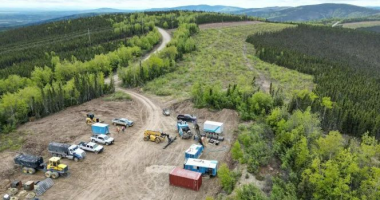Embattled Poseidon Nickel (ASX:POS) – now a penny-stock as the world doggy paddles in a sea of Indonesian nickel – has announced it’s restarted exploration at its Lake Johnston project about a week after MinRes walked away from buying it.
The stock shot up 37.5% in lunchtime trades to a sixth of a cent – though, this was on just short of $38,480 worth of shares trading hands, according to a service that ports Morningstar data.
So, take that with a grain of salt.
If you’re finding somewhat strange the move to recommence activities on-site at Lake Johnston after a four month break while Australia still waits to find out how much money BHP lost writing off Nickel West, you’re in the same boat as I.
Let’s give the benefit of the doubt for a moment, because there’s actually one solid consideration to observe.
The nickel price nosedive that we carried with us into the start of this auspicious year of 2024 has been quietly paring off in the background while uranium, gold, copper, and NVIDIA have taken centre-stage.
In lunchtime trades on Friday, nickel has managed to chip off its YoY losses to the tune of -5.47%.
A monthly read of nickel prices on the London Metal Exchange (LME) have actually increased 10% in the last 30 days, which reflects a per-tonne price of US$19,000/t.
So, okay, that makes sense why Poseidon has recommenced work on site. Right? It sure does, so long as you don’t look at global macro.
For how long the nickel price upswing can last is a compelling question, seeing as Indonesia isn’t going anywhere anytime soon when it comes to relinquishing #1 producer status.
There had been much ado from Poseidon’s former CEO about the cleaner nature of Australian nickel sulphides over Indonesian laterite, but so far, the market isn’t really buying the Aussie story of greener nickel mining.
In fact, in the current economic environment where it’s more expensive than usual to do anything – especially true for the scale of CapEx miners employ – it doesn’t make much rational sense that sulphides would be inherently desirable over the mineralogically dirtier laterite.
Then there’s the issue Indonesia’s government has recently given priority status to 5 different nickel projects onshore its borders, suggesting the Indo-led nickel surplus will likely hang around until the mid-to-late 2020’s.
So why are nickel prices rising, then? TradingEconomics posits funds have been buying nickel as an inflation hedge, and on the commodity cycle POV, probably buying what they believe to be a dip. There’s also the consideration that the trading of nickel on the LME has not been without its eyebrow-raising moments in the past.
And if all of that is too boring to get curious about – I forgive you – consider that Poseidon only had $2.8M in cash in its last quarterly.
Just under three million in exploration for nickel restarted – even without nickel markets, you’ve still got the issue the company’s gonna’ have to capital raise before too long.
POS last traded at 0.6cps.








